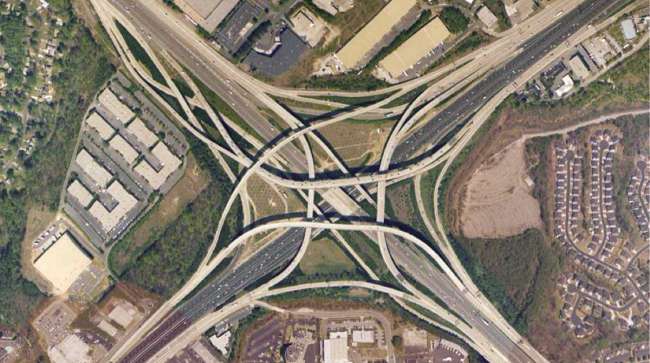Staff Reporter
Georgia DOT, Partners Sign Pact to Streamline Construction Projects

[Stay on top of transportation news: Get TTNews in your inbox.]
Georgia Department of Transportation leaders signed an agreement with other agencies, including the Federal Highway Administration, to streamline environmental procedures for highway construction projects.
The programmatic agreement was signed in consideration of Section 106 of the National Historic Preservation Act, which requires that each federal agency identify and evaluate the effects its actions may have on historic buildings. The agreement, signed Dec. 9, establishes the terms for GDOT and other state and federal agencies to review and comply with federal laws pertaining to historic preservation.
Specifically, the agreement involves collaboration among GDOT, FHWA, the U.S. Army Corps of Engineers, the Advisory Council on Historic Preservation, the Georgia State Historic Preservation Office and multiple tribal nations.
“This is a positive step forward in improving Georgia DOT’s ability to efficiently deliver quality projects that are fully compliant with environmental standards,” GDOT Commissioner Russell McMurry said. “Georgia DOT is grateful for the commitment of the individuals and agencies who got us here.”

McMurry
According to a notice from GDOT, the agency has worked with federal, state and tribal partners on a programmatic agreement since December 2017. The groups held numerous meetings, created multiple drafts and weighed public input.
The programmatic agreement clarifies how agencies conduct tribal consultations, review projects, handle post-review discoveries and treat human remains in practical application. The Muscogee (Creek) Nation signed the agreement as an invited signatory, and the Cherokee Nation and Catawba Indian Nation signed as concurring parties.
The agreement remains in effect for five years and includes a stipulation for a five-year extension. The text of the agreement states that any signatory may at any time propose amendments, which all parties must consult to consider. All parties need to concur for an amendment to be adopted.
GDOT, FHWA and the Georgia State Historic Preservation Office have reviewed elements of Section 106 before. Previous programmatic agreements have focused on historic streetcars and smaller emergency relief projects.
According to GDOT, the programmatic agreement was needed because of GDOT’s growing transportation program, which uses federal and state funds and includes projects that are subject to Section 106 of the National Historic Preservation Act.
“With the breadth of Georgia DOT’s multibillion-dollar program, resource agencies and American Indian tribes can expect consistency from GDOT regardless of FHWA or USACE involvement because the Section 106 Programmatic Agreement establishes one process and the agreed upon level of documentation,” McMurry said.
Georgia’s population — and transportation needs — are growing. Georgia ranks No. 7 on the U.S. Census Bureau’s list of top 10 states in numeric growth between 2017 and 2018. The state saw a population increase of more than 106,000 during that time.
Georgia, particularly the Atlanta metropolitan area, contains some of the most congested bottlenecks in the country. Atlanta’s five-level stack interchange where interstates 285 and 85 North intersect, known as “Spaghetti Junction,” ranked No. 2 on the American Transportation Research Institute’s truck bottlenecks report, released Feb. 12. (The intersection ranked No. 1 on last year’s report.)
READ MORE: Top 100 Truck Bottlenecks: Texas Tops 2019 ATRI List With 13
The third spot on ATRI’s list, the intersection between I-75 and I-285 North, also belongs to Atlanta.
Want more news? Listen to today's daily briefing:




